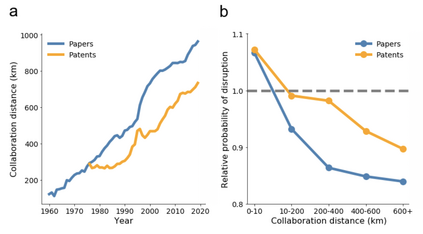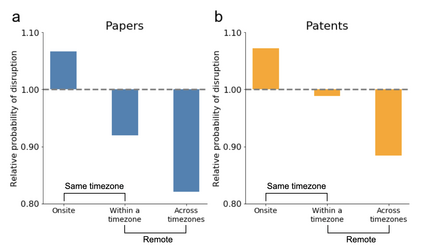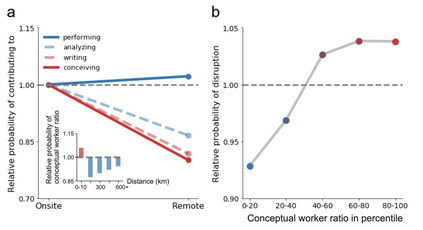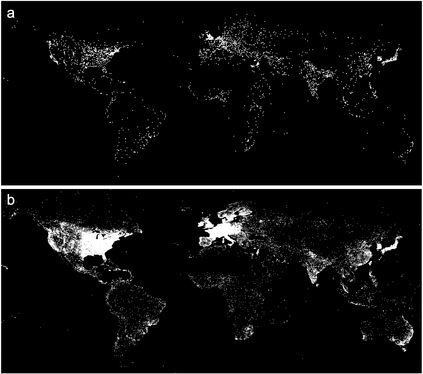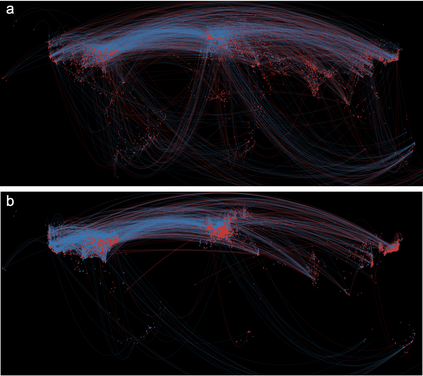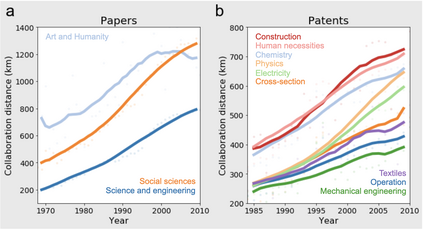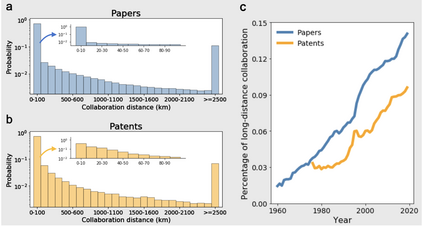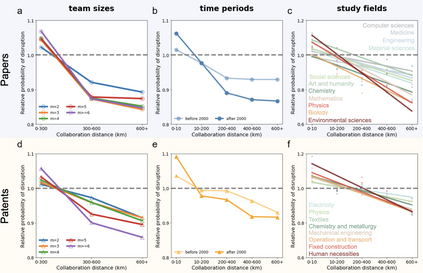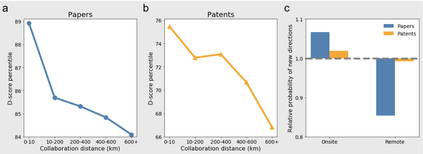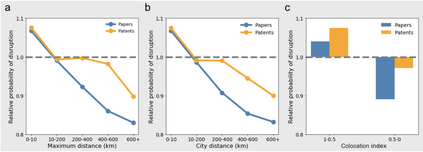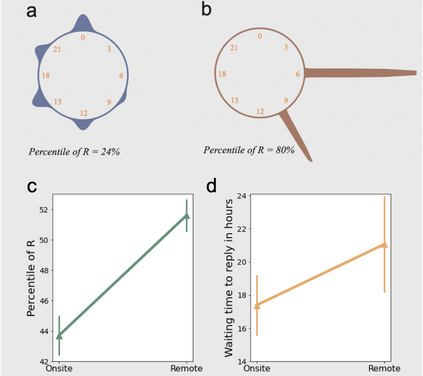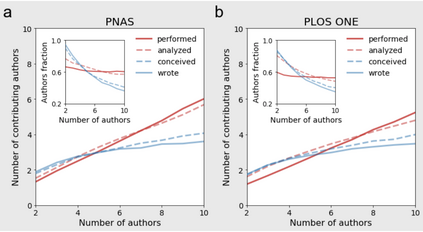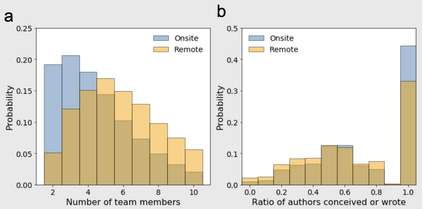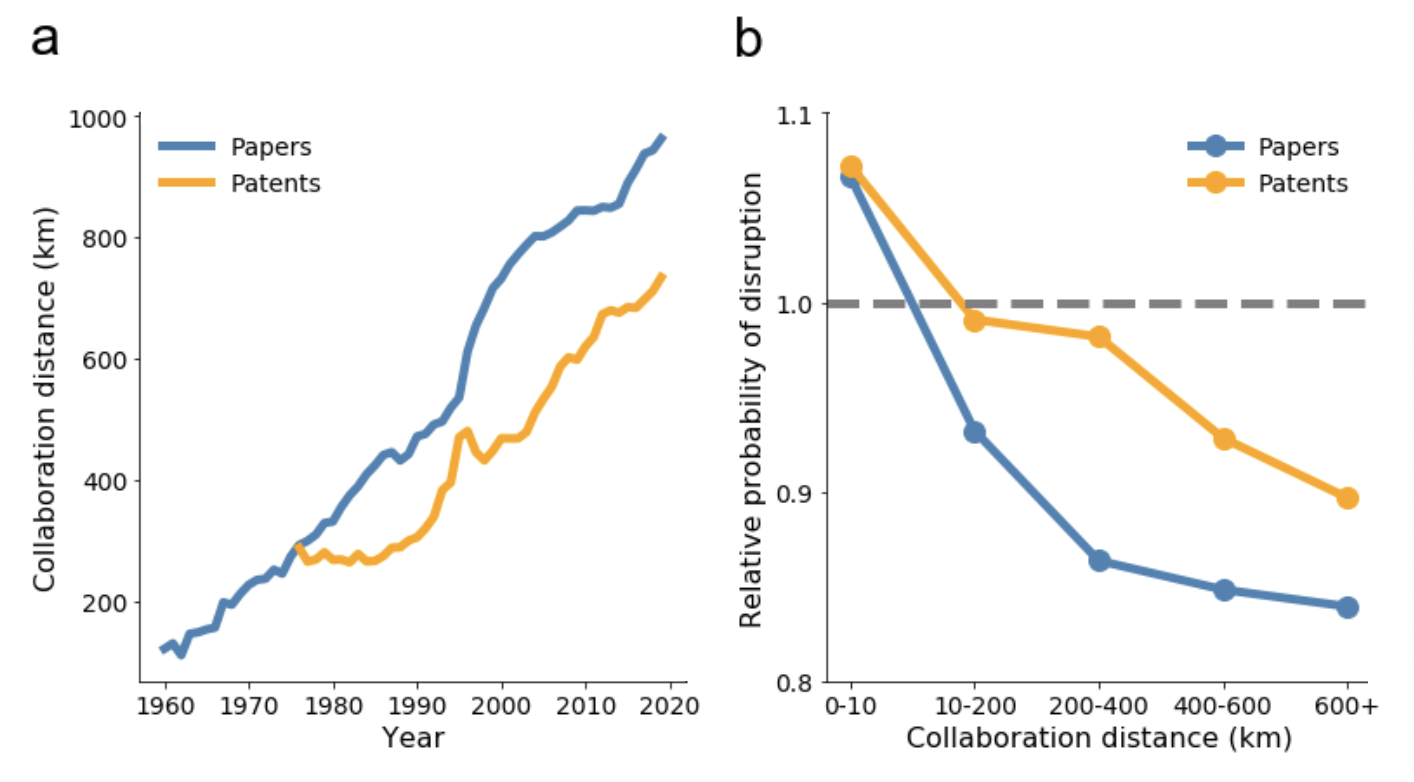Scientists and inventors around the world are more plentiful and interconnected today than ever before. But while there are more people making discoveries, and more ideas that can be reconfigured in novel ways, research suggests that new ideas are getting harder to find-contradicting recombinant growth theory. In this paper, we shed new light on this apparent puzzle. Analyzing 20 million research articles and 4 million patent applications across the globe over the past half-century, we begin by documenting the rise of remote collaboration across locations, underlining the growing interconnectedness of scientists and inventors globally. However, we also show that for all fields, periods, and team sizes, researchers in these distributed teams are consistently less likely to make breakthrough discoveries relative to their onsite counterparts. Using a novel dataset that allows us to explore the division of labor within each team, we find that distributed team members tend to collaborate in technical tasks-like collecting and analyzing data-but are less likely to join forces in conceptual tasks, such as conceiving new ideas and designing research. Hence, while remote teams collaborate in theory, actual cooperation centers on late-stage, technical project tasks, involving more codified knowledge. We conclude that despite striking improvements in remote work technology in recent years, remote teams are less likely to integrate existing knowledge to produce new, disruptive ideas. This also provides an explanation for why new ideas are getting harder to find.
翻译:世界各地的科学家和发明家今天比以往任何时候都更加丰富和相互联系。 但是,虽然现在有更多的人发现发现,更多的想法可以以新的方式重新配置,但研究表明,新的想法越来越难找到矛盾的再组合增长理论。在本文中,我们对这一明显的难题提供了新的见解。在过去半个世纪里,分析全球各地2 000万份研究文章和400万份专利申请,我们开始记录不同地点远程合作的兴起,强调全球科学家和发明家之间日益扩大的相互联系。然而,我们也表明,在所有领域、时期和团队规模上,这些分布的团队的研究人员总是不太可能找到与其现场对应人员相比的突破性发现。使用新的数据集使我们能够探索每个团队的分工。我们发现,分布的团队成员倾向于在技术任务如收集和分析数据方面进行合作,但不太可能在概念性任务上联合起来,例如发现新的想法和设计研究。因此,尽管远程团队在理论上进行合作,但实际的合作中心在后期和团队规模上却总是越来越不可能取得突破性的发现,而这种远程项目任务则有可能产生更难以实现的知识。

